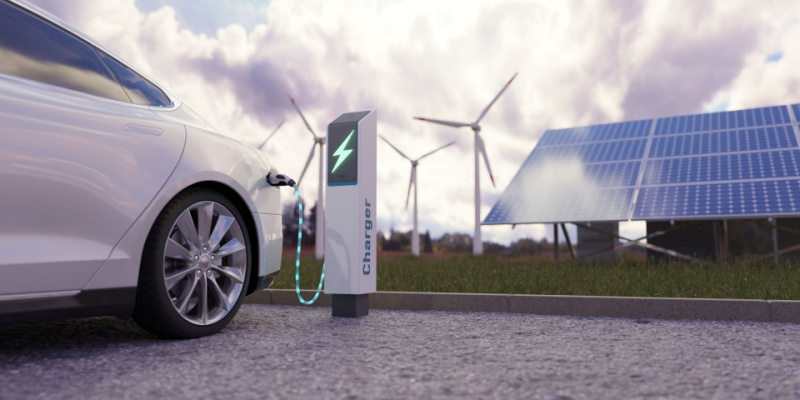Did you know that by 2030, electric vehicles (EVs) are expected to account for over 30% of all new car sales globally, according to Bloomberg Green? As cities around the world aim to reduce carbon footprints and improve air quality, the integration of artificial intelligence (AI) and electric vehicles is not just a trend—it’s a transformative movement shaping the future of urban mobility. In this article, we’ll explore how AI and EV innovations are revolutionizing urban transportation, the technologies driving these changes, and what this means for our cities.
The Role of AI in Enhancing EV Efficiency
1. Smart Charging Infrastructure
AI is making waves in the EV sector by optimizing charging infrastructure. Advanced algorithms are being used to manage load distribution, ensuring that charging stations are not overwhelmed during peak hours. Companies like Tesla and Volkswagen are developing AI-driven smart grids that can predict energy needs based on user patterns, creating a seamless and efficient charging experience. This not only reduces energy waste but also lowers costs for consumers.
- Benefits of Smart Charging:
- Dynamic energy pricing
- Reduced grid strain
- Improved user convenience
2. Autonomous Driving: The Next Frontier
AI’s potential in autonomous driving is a game-changer for urban mobility. With companies like Waymo and Tesla leading the charge, self-driving cars are becoming more than just a futuristic concept. These vehicles use sensors and AI algorithms to interpret data in real-time, ensuring safe navigation through complex urban environments.
- Key Milestones:
- Tesla’s Autopilot and Full Self-Driving features
- Waymo’s self-driving taxi service in Phoenix, Arizona
- Hyundai’s AI-based driver assistance systems
AI-Driven Fleet Management
3. Optimizing Public Transportation
AI’s integration into public transport systems is improving efficiency and reducing operational costs. Cities like Singapore and London are leveraging AI to manage bus and train schedules dynamically, minimizing wait times and enhancing passenger experience. AI can analyze real-time data to adjust routes and frequencies based on current demand, reducing overcrowding and delays.
4. Ride-Sharing and Mobility-as-a-Service (MaaS)
The rise of ride-sharing platforms like Uber and Lyft is being propelled by AI technology. These services utilize AI to match riders with drivers effectively, predict demand surges, and optimize route efficiency. The concept of Mobility-as-a-Service (MaaS) is gaining traction, where users can plan, book, and pay for multiple types of mobility services through a single digital interface, integrating public and private transport modes.
- Top MaaS Providers:
- Whim (Finland)
- Moovit (Israel)
- Citymapper (UK)
Practical Tips for Embracing AI and EV Innovations
5. How to Charge Your EV Efficiently
Understanding how to charge your EV efficiently can save time and money. Here are some practical tips:
- Use Smart Chargers: Invest in AI-enabled smart chargers that optimize charging times and rates.
- Plan Your Charging: Use apps to locate the nearest charging stations and check availability.
- Off-Peak Charging: Charge your EV during off-peak hours to take advantage of lower electricity rates.
6. Where to Buy the Latest EV Models
Finding the right EV can be daunting with so many options available. Here’s a quick guide:
- Research Online: Websites like InsideEVs and CleanTechnica offer reviews and comparisons of the latest models.
- Visit Dealerships: Brands like Tesla, Rivian, and Hyundai have showrooms where you can test drive EVs.
- Consider Incentives: Check for government incentives and rebates for purchasing EVs in your region.
The Future of Urban Mobility: What to Expect
As AI and EV technologies continue to evolve, the future of urban mobility looks promising. The International Energy Agency (IEA) predicts that by 2030, there could be as many as 230 million EVs on the road, significantly reducing greenhouse gas emissions and reliance on fossil fuels. The convergence of AI, EVs, and autonomous technology will lead to:
- More Livable Cities: With reduced traffic congestion and pollution.
- Increased Accessibility: Mobility solutions for all, regardless of economic status or physical ability.
- Innovative Urban Planning: Cities redesigned to accommodate EVs and autonomous vehicles, with more green spaces and pedestrian areas.
Conclusion: Embrace the Future of Mobility
AI and EV innovations are not just reshaping how we move—they are redefining the very fabric of our urban landscapes. By embracing these technologies, cities can become more sustainable, efficient, and livable. As we look forward to an era of smarter transportation, the question is: How ready are we to adapt to these changes and what role will each of us play in this mobility revolution? Join the conversation and explore how you can be part of this transformative journey.
Whether you’re an early adopter or just curious about the future of transportation, now is the time to explore the possibilities that AI and EV innovations offer. The road ahead is electric, intelligent, and exciting. Let’s drive into the future together!

